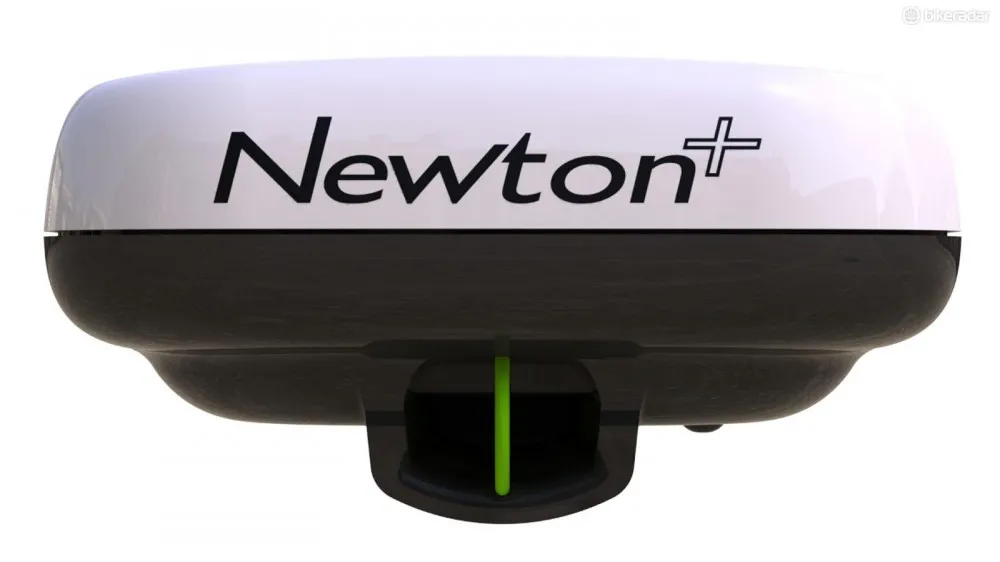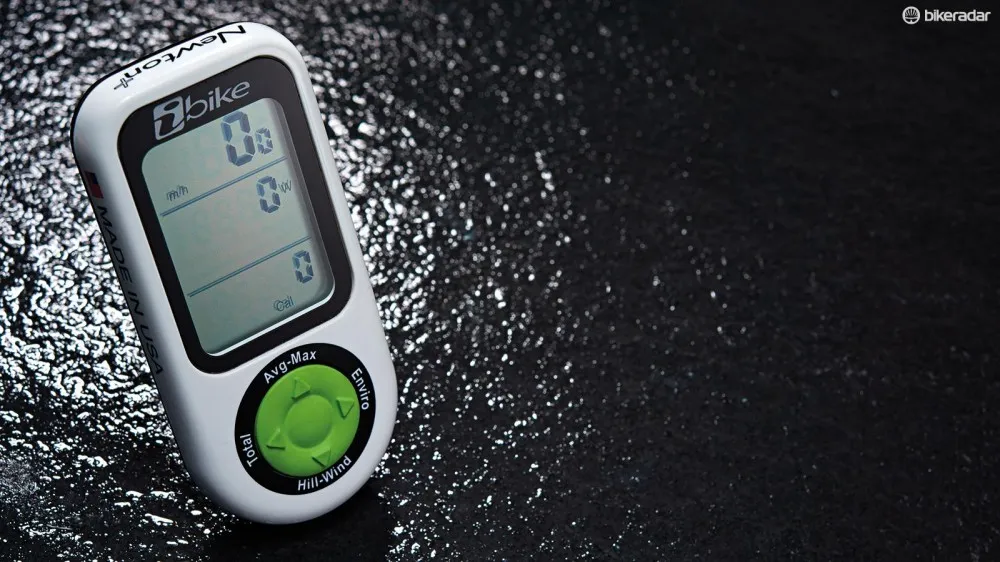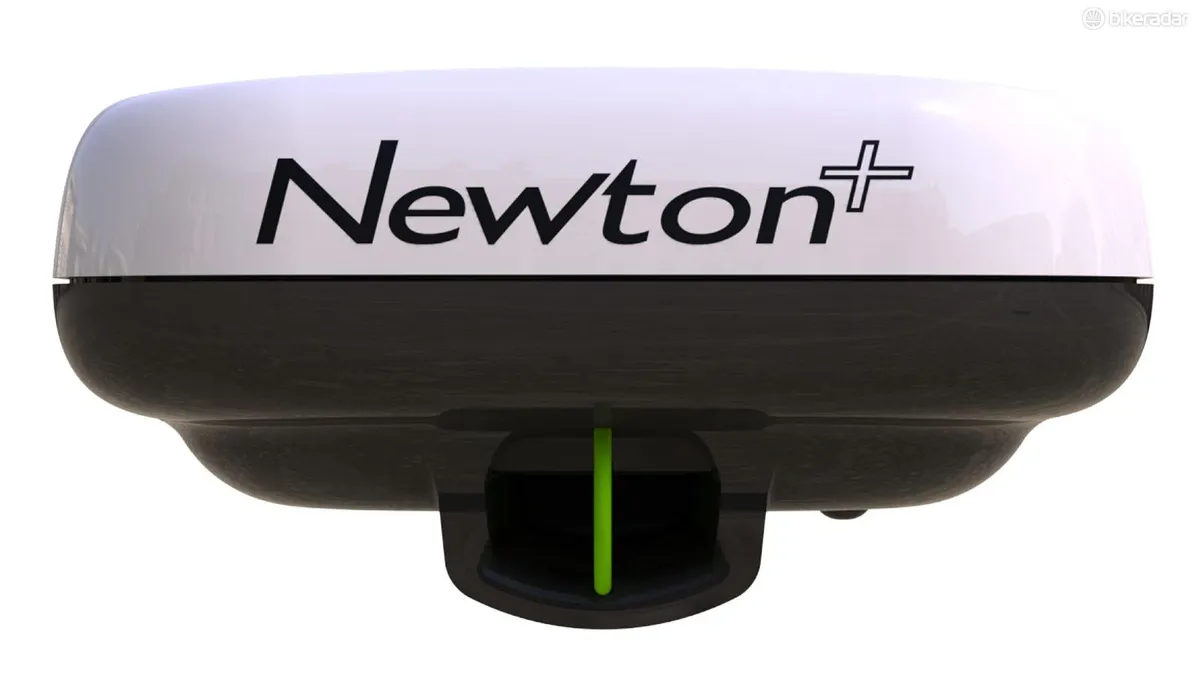The power meter market has exploded in the last two years and the revolution is still gathering pace. Shouting for attention among all the startups is the iBike Newton, a device first launched in 2004 and relaunched last year.
Unlike every other power meter on the market, the Newton doesn’t measure the force that your legs put into the drivetrain (whether at the pedal, crank, spider or hub); rather, it calculates your power by measuring the forces that you are overcoming – wind and gradient.
- Highs: Light, affordable
- Lows: A nightmare to set up, awkward to use, very vulnerable to inaccuracy
It has a wind sensor at the front and sensitive accelerometers to detect gradient. We’ll get to rolling resistance in a bit.
A speed sensor tells it bike speed, allowing it to calculate any head/tailwind, and a cadence sensor means it only calculates power when you’re actually pedalling. There is also a CdA function that is claimed to be able to calculate your drag in real time when the Newton is used alongside a regular power meter.
The Newton weighs 82g and the sensors 22g. Prices start at £599 / $499 without the heart-rate strap and Powerstroke functions included in this version.

The Newton+ weighs in at 82g
Because you don’t need a separate computer, the Newton is lighter and cheaper than any other power meter and Garmin combination. It doesn’t have GPS but there is a Strava compatible smartphone app that can record your ride and you can also export the power data to Strava and other training software.
The Powerstroke function uses the accelerometers and cadence sensor to assess the smoothness of your pedalling, including wasted lateral movement. It’s a genuinely useful feature – arguably more so than left/right split – which you can use to improve your efficiency. You can use the Newton indoors, too, by selecting your turbo and its resistance profile from a list of over 200 stored in the iBike PC software.
To set up the Newton, you have to program your height, weight, bike weight, tyre size and type, typical road surface and usual riding position (in other words, hoods or drops). With that done, and the sensors mounted to your bike and paired, you then carry out a 10-minute out-and-back calibration ride on a simple bit of road that you can do without stopping. You then upload that ride to the Isaac software and store the data. It’s a lot more fuss than fitting and pairing any other power meter.
At least the Newton does look easier to swap from bike to bike, so long as you have sensors on each and you’ve done all the calibration. It’s possible to store several bike profiles but setting them up and switching between them is infuriatingly awkward, and the huge instruction manual is terrible.
This test unit was first fitted by the inventor and the UK agent when they visited our office. It seemed to work fine and trace closely with the Quarq power meter fitted to that bike.
Then I noticed that it was actually displaying the Quarq’s data, despite expressly asking for the iBike to be set up to show its own figures. Once set that way there was a little more divergence in the data but the iBike appeared to be pretty accurate for both steady efforts and sprints.
We later found out that it still “cross-references” with a direct force meter when it has been paired with one. Make of that what you will.
The good news is that when fitted to a bike with no other power meter the Newton still gave data that seemed believable. We had deep reservations before using it but the Newton can work. It’s clever engineering.
The bad news is that it only works sometimes. Our unit repeatedly froze, requiring a ‘hard reset’ and then a new calibration ride, and we also had problems with the cadence and speed sensors not picking up.

The Newton+ is an interesting but ultimately frustrating piece of tech
What’s more, the battery life is terrible, depleting in a week even in sleep mode, and it won’t turn on once below 23 percent. It’s useless at night because – incredibly – there’s no backlight, and it doesn’t work in the rain because it sends the wind sensor crazy. “Our customers don’t generally ride in the dark or rain,” iBike told us.
More fundamentally, it’s a bad bike computer, with crude 1980s-calculator-style graphics that force awkward abbreviations and display very little data given the screen size. Updates have added a degree of configurability, though it still lags miles behind a Garmin 800, let alone the latest 1000.
The Isaac software is the very opposite of intuitive and user-friendly. It shows masses of data has some decent analysis tools but it loads painfully slowly and uploading a ride can take minutes.
The biggest problem, though, is inherent to the Newton’s design. It relies on a set of givens – road surface, tyre pressure and choice, riding position, clothing and helmet choice, weight of accessories fitted – and any deviation from what those were on the calibration ride will cause data inaccuracy.
If you put on a rain jacket, sit up on the tops, forget to top up your tyres by the 10psi they’ve lost since your last ride, fit a number to the bars… all of these things reduce efficiency and will cause the unit to under-read. On the flipside, if you hit some smoother road, tuck down in the drops and wear a more aero jersey, the unit will over-read. And you can imagine the chaos if you have a few sets of wheels and a couple of different helmets for training and racing.
Some of the smaller quirks would be forgivable if it were reliable and much cheaper but the power meter market is far too competitive. At the time of writing the iBike is still the cheapest option but there are several affordable power meters coming soon and all of the cheaper current offerings – Quarq Elsa, Power2Max Type S, Stages, Garmin Vector S – comfortably out-perform the Newton. If you want a power meter, do it properly.


